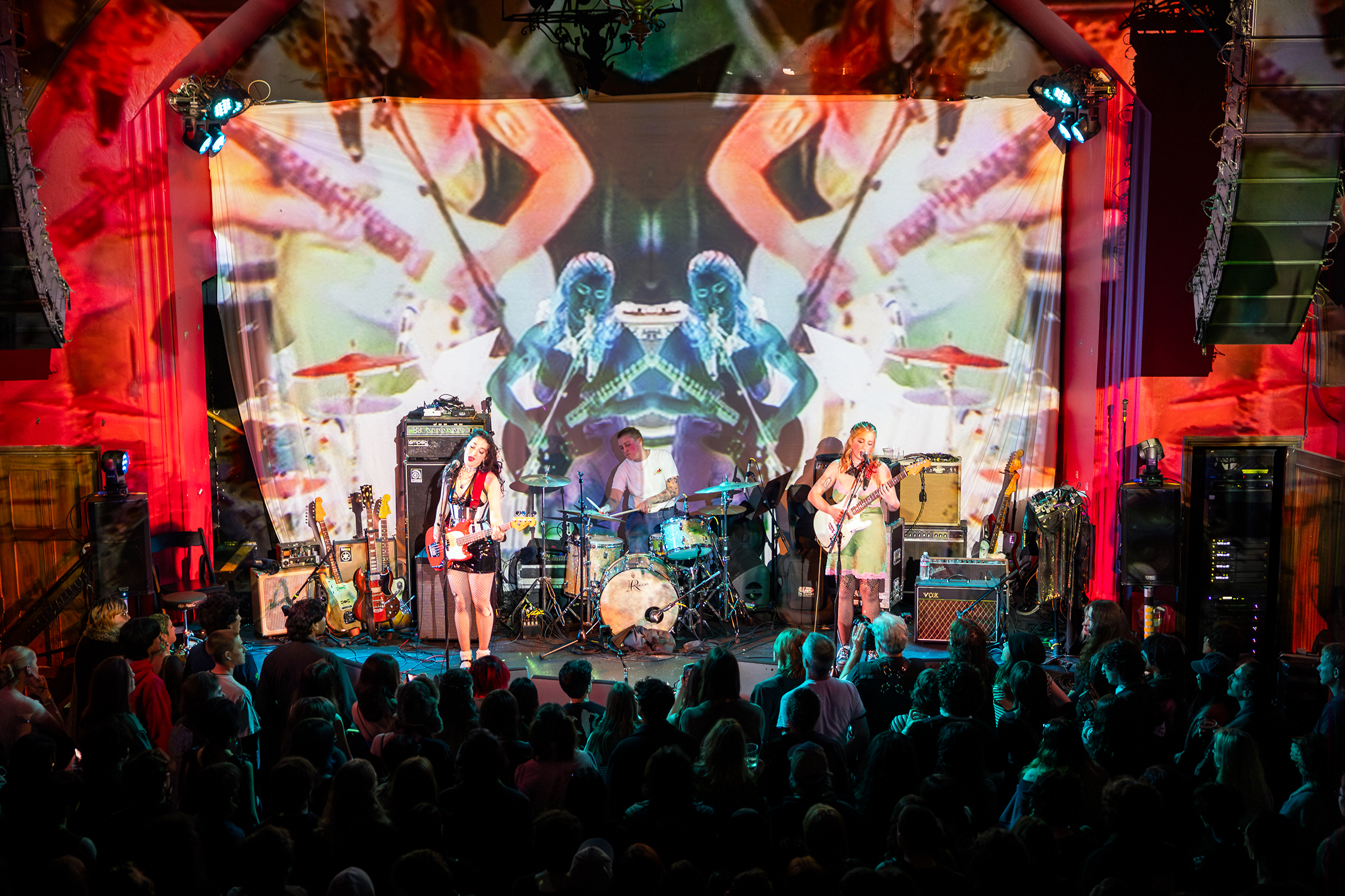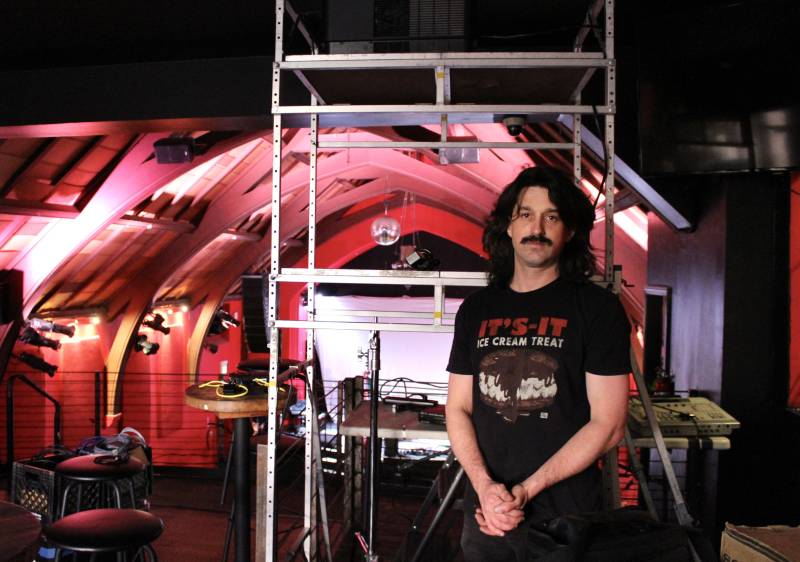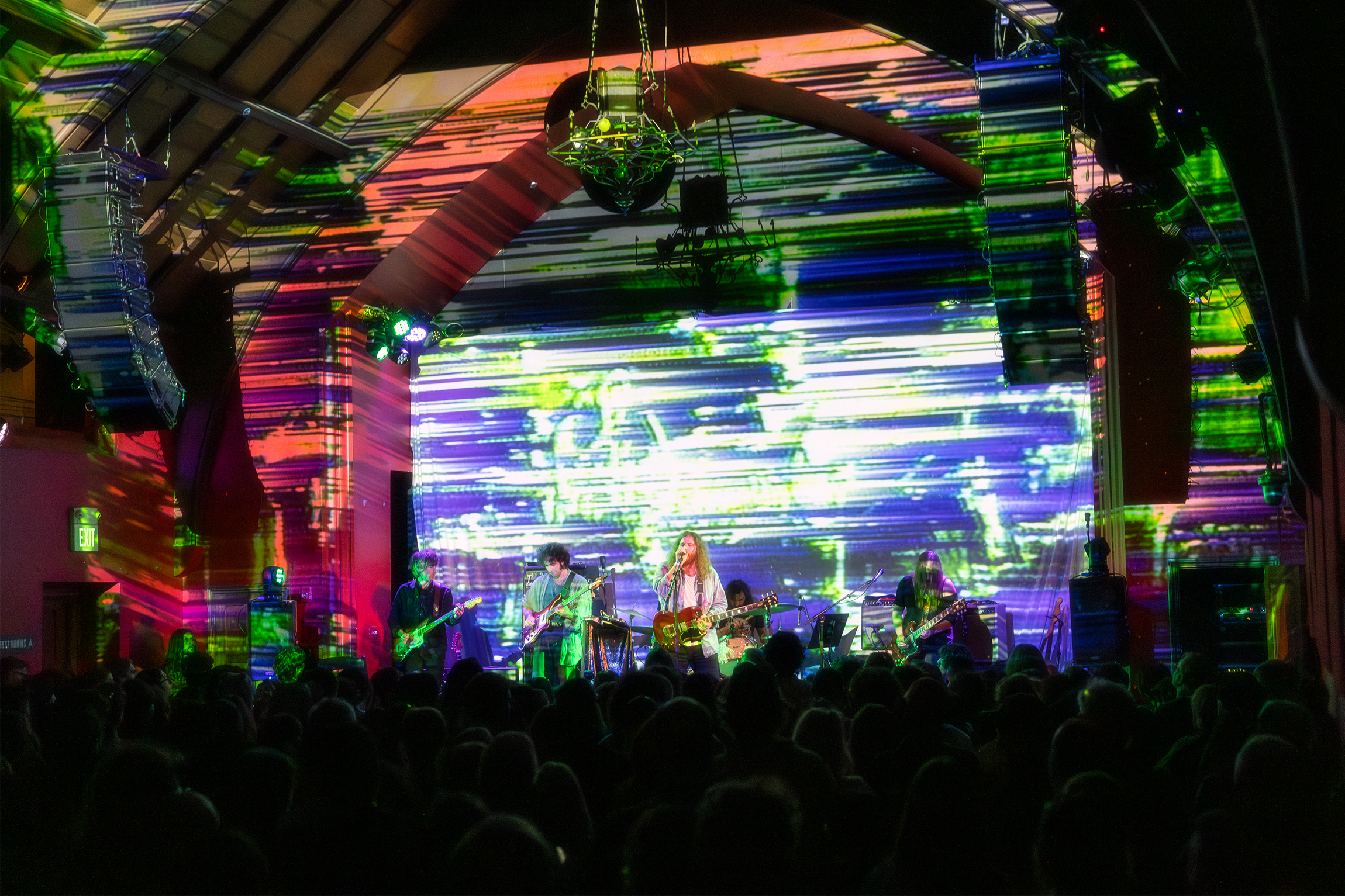Moments before Panchiko takes the stage at their sold-out UC Theatre show in April, Zach Rodell is plotting a visual projection display he’s never done before. He’s just gotten back from doing visuals at Coachella with LA psych rockers Jjuujjuu. And while Panchiko’s Berkeley tour stop might be Rodell’s first time working with the British indie band, he’s doing anything but playing it safe.
“You always want to envelop the audience so there’s visuals in your peripheral,” Rodell says as he juggles software platforms on his computer, which is connected to different MIDI controllers and analog hardware. “Lose your senses. Get lost in a show. … So I’m gonna try something really risky.”
The show is about to start, yet Rodell — who lives in San Francisco’s Sunset district — is still downloading new digital art code packets from his command center next to the sound booth. He wants to project a deep-cut Sega Saturn warning graphic to make it look like the band is playing inside of an old video game — a fitting decision given that Panchiko’s young, internet-obsessed fanbase unearthed their music online almost 20 years after it was first released.

Rodell typically begins his process by recording a band on stage, then projecting that footage live onto a venue’s walls while layering it with fuzzed-out graphics and trippy, distorted colors. It creates a kind of living, breathing visual companion to the music, whose metamorphosis unfolds before the audience.
Panchiko’s performance feels like a full-on audiovisual ecosystem. The band plays in front of a live superimposition of themselves soaked in Rodell’s digital watercolors, layered atop anime and gaming graphics. At the end of the night, Rodell is pleased with himself, even though he says wi-fi issues prevented him from executing all the “risks” he wanted to take, including a live AI art projection.



